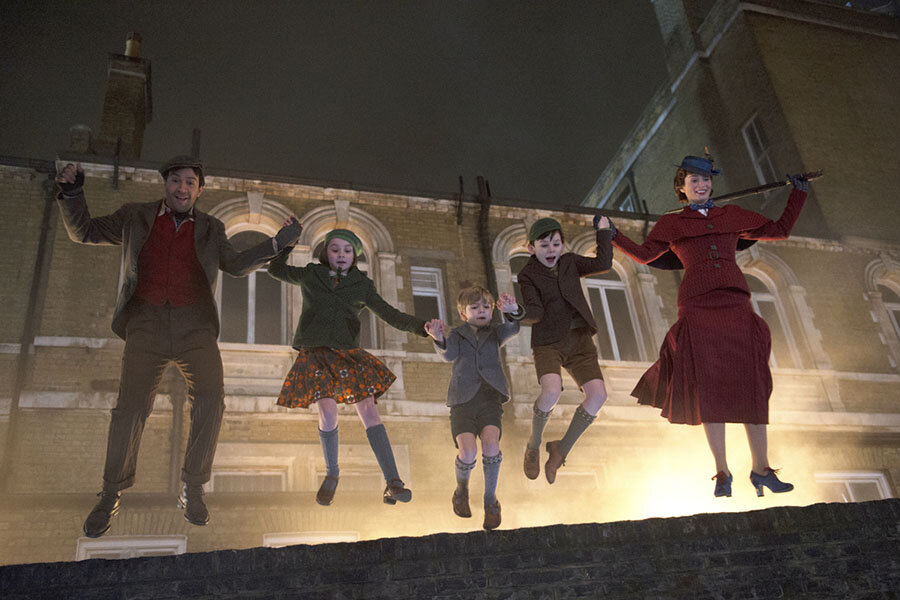'Mary Poppins Returns' is unmemorable but has moments of joy
Loading...
Fashioning a sequel to a beloved movie is almost always a losing proposition. Yes, there are glorious exceptions like “The Godfather: Part II," "Star Wars: Episode V – The Empire Strikes Back," and "Toy Story 3," but the list thins out appreciably after these.
"Mary Poppins Returns," which picks up more than 20 years after "Mary Poppins," is by no means a failure. It’s well crafted, well acted, and features some terrific live-action/animation combos. But it never quite achieves liftoff, which is a big problem for a musical – especially this musical.
The setting is London during the “Great Slump” – i.e., the Depression. The Banks children of the first film are grown-up now: Michael (Ben Whishaw), who works in a bank, is recently widowed; his sister, Jane (Emily Mortimer), who lives nearby, is a labor organizer. She, along with Ellen (Julie Walters), the cranky housekeeper, helps take care of Michael’s three children (played by Pixie Davies, Nathanael Saleh, and Joel Dawson) but clearly help is needed.
Enter Emily Blunt’s Mary Poppins, alighting from the sky with bag and umbrella. As brisk and no-nonsense as ever, she eventually makes things right despite a looming crisis in which the Banks home will be repossessed for nonpayment of mortgage unless Michael can locate his father’s missing stock certificates.
Director Rob Marshall, screenwriter David Magee, and Marc Shaiman and Scott Wittman, who wrote the score, clearly admire the Julie Andrews-Dick Van Dyke original, so much so that they fashion their film along very similar lines. So, for example, the original movie had the musical number "Step in Time"; here it’s "Trip a Little Light Fantastic." That so many of the numbers in the new film involve Lin-Manuel Miranda as a lamplighter – a nod to Van Dyke’s chimney sweep – is all to the best, since he’s a first-rate song-and-dance man, even when cavorting in less than first-rate material. And I liked Blunt’s edgy take on Mary Poppins. She’s not quite as treacly as Julie Andrews was. (Heresy to say, I know.)
But I didn’t come out humming any of the songs, and even the more imaginative sequences, such as the one where Mary Poppins draws the children into a fantasy world spun off illustrations painted on pottery, didn’t really stay with me. Still, I suppose momentary joy is better than no joy at all, and there is a wonderful moment at the end when Van Dyke suddenly appears in a cameo chastising the scurvy bank manager (Colin Firth) and does a balletic leap onto a table. I cheered. Grade: B (Rated PG for some mild thematic elements and brief action.)







